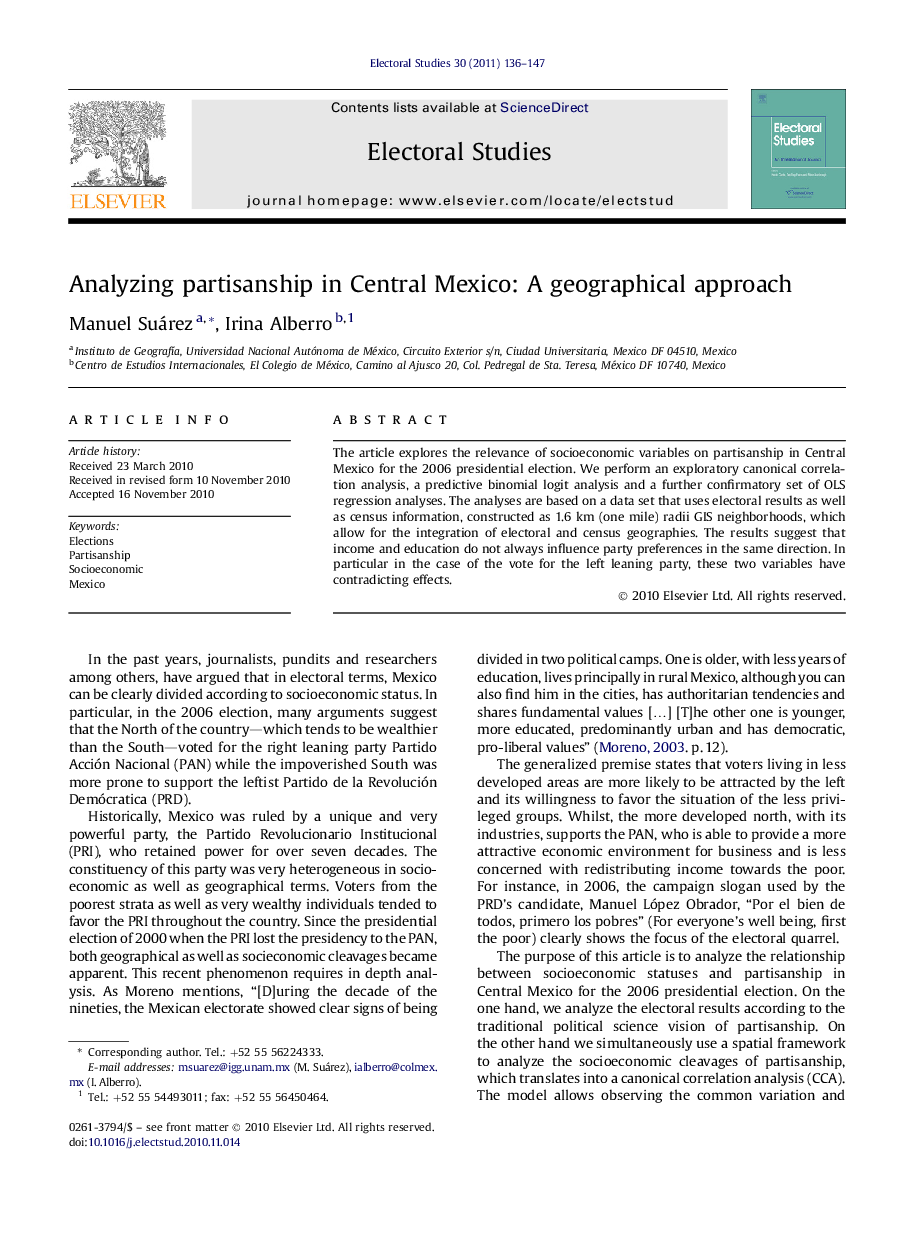| کد مقاله | کد نشریه | سال انتشار | مقاله انگلیسی | نسخه تمام متن |
|---|---|---|---|---|
| 1052238 | 946378 | 2011 | 12 صفحه PDF | دانلود رایگان |

The article explores the relevance of socioeconomic variables on partisanship in Central Mexico for the 2006 presidential election. We perform an exploratory canonical correlation analysis, a predictive binomial logit analysis and a further confirmatory set of OLS regression analyses. The analyses are based on a data set that uses electoral results as well as census information, constructed as 1.6 km (one mile) radii GIS neighborhoods, which allow for the integration of electoral and census geographies. The results suggest that income and education do not always influence party preferences in the same direction. In particular in the case of the vote for the left leaning party, these two variables have contradicting effects.
► Use of geographical methods to combine electoral data with socioeconomic data in order to enrich aggregate electoral analysis in Mexico.
► Use of a canonical correlation model to analyze voting dimensions.
► Key finding is that votes for the traditional party (PRI) are explained by low income, and votes for the right lenient party (PAN) are explained by high education and income. However, the left lenient party (PRD) wins in areas where income does not match the level of education of the population and where income is lower than in equally educated areas where PAN wins.
Journal: Electoral Studies - Volume 30, Issue 1, March 2011, Pages 136–147